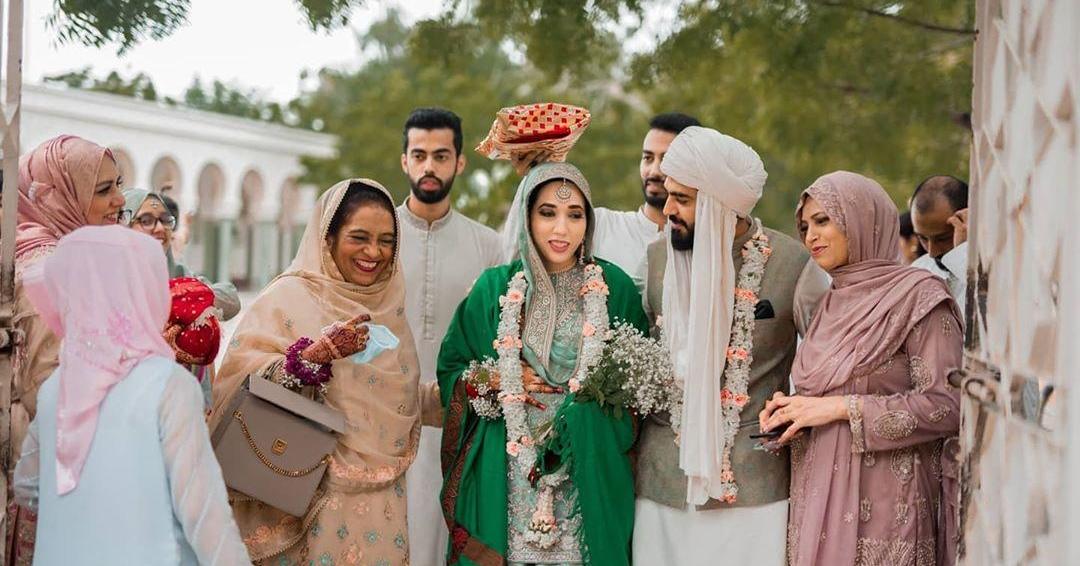Are you curious to know what is rukhsati? You have come to the right place as I am going to tell you everything about rukhsati in a very simple explanation. Without further discussion let’s begin to know what is rukhsati?
In the vibrant tapestry of South Asian weddings, the ritual of “Rukhsati” holds deep cultural and emotional significance. Rooted in tradition, Rukhsati marks the poignant moment when the bride bids farewell to her parental home to begin her new life with her husband. In this blog post, we’ll explore the profound meaning, rituals, and emotions woven into the tradition of Rukhsati, capturing the essence of this heartfelt transition in South Asian matrimonial ceremonies.
What Is Rukhsati?
Rukhsati, derived from the Persian word “rukhsat” meaning departure, symbolizes the bride’s emotional departure from her family’s home to embark on her journey as a wife in her husband’s household. This ritual is considered a pivotal and emotional phase in the wedding ceremony, signifying the transition from one phase of life to another.
The Ritual And Ceremonies:
- Emotional Farewell: As the moment of Rukhsati approaches, emotions run high among the bride, her family, and loved ones. Tears, laughter, and heartfelt sentiments fill the air, creating an atmosphere charged with emotions.
- Blessings and Well-Wishes: Before the bride’s departure, family members, especially the parents, offer blessings, prayers, and advice for a happy and prosperous married life. Elders shower the bride with heartfelt blessings and good wishes for her future.
- Symbolic Gestures: In some traditions, the bride throws rice or coins backward over her shoulder, symbolizing the sharing of prosperity and wealth with her family as she leaves their home.
- Departure Ceremony: Accompanied by music, songs, and traditional rituals, the bride is escorted by her family members, often amidst emotional songs and prayers, to her new home with her husband.
Emotions And Significance:
The Rukhsati ceremony evokes a myriad of emotions, encapsulating joy, nostalgia, and a tinge of melancholy. For the bride, it signifies leaving behind her childhood home and embracing a new family, while for the parents, it marks a bittersweet moment of seeing their daughter off into a new chapter of life.
Cultural Variations And Modern Adaptations:
Rukhsati traditions may vary across regions and communities within South Asia, reflecting diverse cultural nuances and customs. In modern times, while the essence of Rukhsati remains intact, some families have adapted the ceremony to accommodate changing societal norms, emphasizing a more gradual and less abrupt departure for the bride.
You can collect more information on Getdailytech.
Legacy And Continuation:
Despite evolving societal dynamics, Rukhsati remains a cherished and deeply rooted tradition in South Asian weddings, symbolizing the bonds of family, love, and the journey of a bride as she transitions from one family to another.
Conclusion:
Rukhsati is not merely a ritual but a poignant and emotive moment that encapsulates the essence of familial bonds, love, and the beginning of a new chapter in a bride’s life. This cherished tradition, steeped in cultural heritage and emotional resonance, continues to hold profound significance in the tapestry of South Asian weddings, bridging the past and present while celebrating the timeless bonds of love and kinship.
FAQ
What Happens At Rukhsati?
Rukhsati. The rukhsati concludes the entire wedding celebration where guests gather to say farewell to the newly married couple. This is an especially bittersweet moment for the bride because traditionally, this is the moment she is leaving behind her childhood and her parents to live with her new husband.
What Is The Difference Between Nikkah And Rukhsati?
Rukhsati means the consummation of marriage. After Rukhsati, the spouses begin living together as husband and wife. It usually takes place a few hours after the Nikah. In some arabic countries, it is commony called “dukhul”.
What Breaks Nikah In Islam?
If you are a man, the Nikkah can be terminated by: pronouncing Talaq (divorce) – ‘ I divorce you’, ‘I have divorced you’ Dhihar – comparing the relationship you have with your wife to a relationship that would be incestuous. Iyla- by taking an oath not to engage in marital relations and fulfilling the oath for 4 months.
What Happens On Wedding Night Islam?
In particular, the wedding night is the first night that a man and woman come together as husband and wife, and it is highly recommended that they form this union with the intention of obtaining the nearness and pleasure of Allāh (SwT) and perform the recommended amaal for this night.
I Have Covered All The Following Queries And Topics In The Above Article
What Is Rukhsati In Pakistan
What Is A Rukhsati Ceremony
What Is Rukhsati In Islam
What Is Rukhsati Wedding
Why Is Rukhsati Sad
What Happens At Rukhsati
Difference Between Nikah And Rukhsati
Gap Between Nikah And Rukhsati In Islam
Sunnah Way Of Rukhsati
Is Rukhsati Necessary In Islam
Time Limit Between Nikah And Rukhsati
Nikah Without Rukhsati In Islam
What Is Rukhsati










